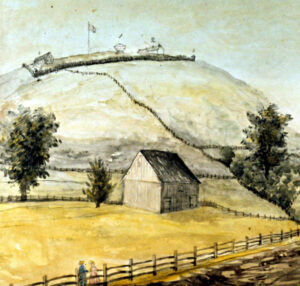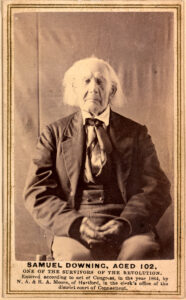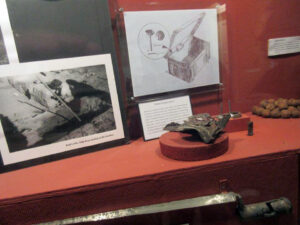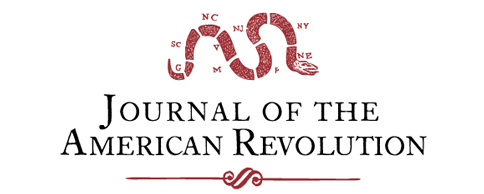If you’ve travelled on US Interstate 90 in New York between Albany and Rome, New York, you may have noticed the words FORT PLAIN emblazoned on a hillside rising up on one side of the highway. It would be easy to assume that this just announces the town of Fort Plain, but for the Revolutionary War enthusiast, it marks something much more significant. On this hill in the later years of the war stood a large fortification for which the nearby town is named. Today, it is the site of a museum that has become an important hub of historical events in the region.

The fort was built in 1781, effectively replacing a number of smaller posts along the strategic Mohawk River, the vital waterway that connected all of western New York to the Hudson River and the rest of the world. The location was chosen carefully, based on years of experience with the military situation in the area—the hilltop had a commanding view of an extensive part of the river in both directions, as well as one of its tributaries. The Continental Army’s officers and soldiers had, by this time, well-honed skills in building fortifications, and created a formidable system of works that protected the fortified hill from all sides.

Few traces of the original fort survive, but a walking tour will lead you to the excavated site of a blockhouse, the spring that provided water for the fort’s garrison, remnants of trenches and earthworks, and other traces of an installation once teeming with activity. Visitors can hike and picnic on the extensive grounds, enjoying the vistas and perhaps taking time to appreciate the skill with which the site was selected. The real treasure is in the museum. It is not a large facility, but inside is a collection of artifacts recovered from the site, along with interpretive materials to tell the Native American and Revolutionary War history of the site and its environs. Among the unique items is the remains of a tin box containing tin quills used to hold priming powder for the fort’s cannons, along with a beautiful replica to show how the box and quills looked when new; and a photograph taken in 1864 of Samuel Downing, who served as a soldier at Fort Plain when he was a teenager.
There is more to this museum than just displays and artifacts. The staff and volunteers host events throughout the year, including lectures, living history displays and book signings. Some of the lectures and book talks can be joined remotely. And the museum has an excellent bookstore with a wide range of titles on the American Revolution and the history of the Mohawk Valley, which can be shopped remotely as well as in person.

The premier events organized by the museum are two conferences, the Revolutionary War Conference and the French & Indian War conference. The annual Revolutionary War Conference (this year, May 29–June 1, 2025) has become one of the most popular in the nation for this subject matter, drawing speakers and attendees from all over the United States, Canada and beyond. Having grown too large to be held at the museum itself, it takes place at a facility nearby and includes a weekend of lectures, a bus tour of local historical sites, and a number of vendors. It is an excellent opportunity to meet some of the premier researchers and authors of the era, as well as to mingle with fellow enthusiasts.

Another reason to visit the museum, and to attend a conference, is that there are many other historical sites significant to the Revolutionary War in the area. In addition to nearby Johnson Hall, Fort Klock and the Stone Arabia battlefield, important sites including Fort Stanwix and the Oriskany battlefield are not far away—not to mention places that figured in the French & Indian War, the building and operation of the Erie Canal, and other facets of eighteenth and nineteenth century history.
Fort Plain has a lot to offer, from the museum itself to conferences and events, to a location amidst many other historical treasures. It’s well worth the visit.
For more information, visit https://fortplainmuseum.org/.





Recent Articles
Lydia’s Tale: The Mystery of Lydia Darragh, Irish Quaker, Patriot Spy
Lt. Elijah Evans of Maryland: Unresolved Promotion in an Extra Continental Regiment
A Journey North: Jefferson, Madison, and the Forging of a Friendship
Recent Comments
"The Evolution of the..."
This article is a gem. Sparkling. Excellent research. Wide and deep. Thank...
"The Evolution of the..."
A very interesting article, thank you! A more general question, if you...
"The Evolution of the..."
Thoroughly researched and a succinct presentation, especially given the article's breadth.